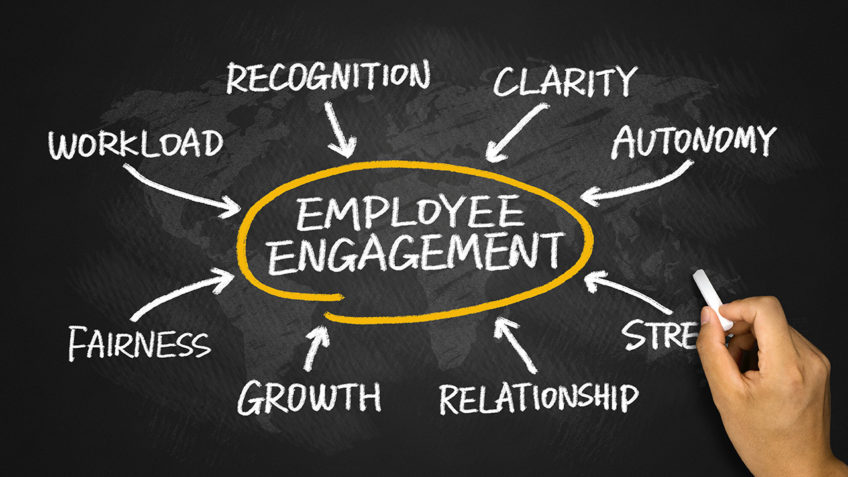
The Importance of Employee Engagement
- 39% of people feel that a stimulating work environment is an effective way to increase employee engagement
- Organizations with high employee engagement outperform organizations with low engagement by 202%
- Disengaged employees cost organizations between $450 and $550 billion annually
- 63% of employees say compensation is important to job satisfaction
In a recent study on employees across the United States, it was reported that companies with happy employees outperformed their competition by 20%. Happy employees perform better, stay loyal and advocate for the company. So, what is the key to acquiring and maintaining happy employees? Keep them engaged. Employee engagement is defined as the extent to which an employee’s personal goals and interests align with the vision and goals of the company they work at.
Why Care About Employee Engagement
Armed with the right knowledge and tools, employee engagement has the power to positively transform your organization. Before diving into the why, let’s first discuss some of the factors that lead to decreased employee engagement. These include manager ineffectiveness, lack of trust in senior leaders, not feeling valued and unpopular benefit plans. Addressing such issues is an easy step in the right direction toward improving company culture within your organization. Additionally, an increase in teamwork, job satisfaction, coworker trust and retention will help your organization achieve higher levels of employee engagement.
So why is it important? Studies show that employee engagement leads to higher levels of productivity, a boost to the bottom line, an increase in sense of health and well-being, and decreased healthcare costs. To be clear, employee engagement is not as simple as having happy employees. While engaged employees are happy, not all happy employees are engaged. Let us explain. Engagement is not just satisfaction in one’s job but requires that an employee’s emotions relate to the company’s values, and translate into increased performance and productivity. Engaged employees feel an emotional connection to the organization, want to succeed within the company’s purpose, and actively search for said success because it has meaning to them. The success of an organization depends on the people they hire. An engaged workforce drives innovation, raises productivity, increase customer loyalty and helps grow the organization. Plain and simple, engagement affects everyone inside the company.
Actively Seeking Employee Engagement
Speaking with some Human Resources professionals at our partner company, OutlookHR, the team gave us five best practices for increasing engagement in your workplace.
- Praise Co-Workers: It’s not just up to management. Congratulate your peers when they reach certain achievements.
- Promote Transparency and Collaboration: Employees want to feel engaged and connected with coworkers and company values.
- Create Health and Wellness Programs: For information on this topic, read our blog “Employee Wellness Ideas to Boost Productivity in the Workplace.”
- Emphasize Work-Life Balance: Give employees a sense of freedom which helps promoted healthiness and engagement.
- Survey Employees: Anonymous surveys provide a safe platform for employees to speak their mind while helping you creating a workplace, they feel most comfortable in.
If you’re looking for additional ways to increase employee engagement at your business, contact us today!
